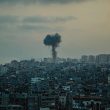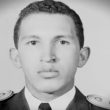Table of Contents Show
I. Origins: From Gori to Revolutionary Vanguard
Joseph Stalin was born Ioseb Besarionis dze Jughashvili on December 18, 1878, in the small town of Gori, in the Russian Empire’s province of Georgia. The son of a cobbler and a washerwoman, his early life was marked by poverty, hardship, and violence. His father, Besarion, was a brutal man who drank heavily and beat his son regularly, contributing to the formation of a personality that would later embody both resilience and ruthlessness. His mother, Ketevan, was devoutly religious and determined that her son would escape his father’s fate. She secured him a place at the local church school, where he excelled academically.
Stalin’s early education at the Gori church school was crucial in shaping his future. It was here that he first encountered Marxist literature, which had begun to permeate the Russian Empire’s intellectual circles. In 1894, he won a scholarship to attend the Tiflis Theological Seminary, a prestigious institution in Georgia’s capital. His mother saw this as a path to the priesthood, but Stalin had other ideas. The seminary was a hotbed of revolutionary thought, and Stalin quickly became involved in underground Marxist activities. His exposure to the writings of Karl Marx and Friedrich Engels, combined with his personal experiences of oppression and injustice, fueled a deep-seated resentment against the tsarist regime.
Stalin’s time at the seminary ended abruptly in 1899 when he was expelled—ostensibly for failing to attend an exam, though his involvement in revolutionary activities likely played a role. He then fully committed himself to the revolutionary cause, joining the Social Democratic Labour Party and working as an agitator and organizer. It was during this period that he adopted the revolutionary pseudonym “Koba,” after a legendary Georgian outlaw hero, symbolizing his break from his past and his commitment to the revolutionary struggle.
Stalin’s early revolutionary career was marked by periods of exile, imprisonment, and daring escapes. He became a master of disguise, using false identities and engaging in acts of sabotage and robbery to fund the revolutionary movement. Despite his relatively low profile within the broader revolutionary hierarchy, Stalin’s organizational skills and unyielding dedication made him a valuable asset to the Bolshevik faction led by Vladimir Lenin. He was particularly effective in the Caucasus region, where he organized strikes, demonstrations, and armed insurrections, gradually rising through the ranks of the party.
By 1912, Stalin had caught Lenin’s attention and was appointed to the party’s Central Committee. He was tasked with editing the Bolshevik newspaper Pravda, a role that gave him influence over party propaganda. His writings from this period reveal a mind increasingly focused on the practical aspects of revolutionary strategy and the consolidation of power. Unlike many of his comrades, Stalin was not an intellectual theorist but a pragmatist, someone who understood the mechanics of power and the importance of discipline and loyalty within the party.
The Russian Revolution of 1917 marked a turning point in Stalin’s life. As the old order crumbled and the Bolsheviks seized power, Stalin emerged from the shadows of the revolutionary underground to become one of the key leaders of the new Soviet state. The skills he had honed in the margins of the empire—his ability to organize, his ruthlessness, and his understanding of power dynamics—would now serve him as he navigated the treacherous waters of Soviet politics, where the stakes were nothing less than life and death.
II. The Rise to Power: From Lenin’s Disciple to Supreme Leader
The years following the Bolshevik Revolution were chaotic and fraught with danger, both from external forces and from within the new Soviet leadership. Stalin’s rise to power was neither straightforward nor inevitable, but it was marked by a combination of political acumen, strategic alliances, and an unrelenting pursuit of his objectives.
In the immediate aftermath of the revolution, Stalin was appointed People’s Commissar for Nationalities, a role that placed him in charge of managing the diverse and often restive ethnic minorities within the vast Soviet territory. His handling of this complex portfolio was a testament to his growing understanding of power and governance. Stalin advocated for a policy of federalism, granting limited autonomy to the various nationalities while ensuring that ultimate authority remained with the central government. This approach helped to secure the loyalty of non-Russian regions to the Bolshevik regime, a crucial factor in the survival of the fledgling Soviet state.
Stalin’s influence within the party continued to grow during the Russian Civil War (1918–1921), a brutal conflict that pitted the Bolsheviks against a coalition of anti-communist forces known as the Whites. As the war raged, Stalin was sent to various fronts as a political commissar, where he demonstrated a ruthless commitment to victory. His methods were often harsh—he authorized executions and purges to enforce discipline and loyalty—but they were effective. By the end of the civil war, Stalin had established himself as one of the regime’s most formidable and reliable leaders.
However, it was Lenin’s declining health that truly opened the door for Stalin’s ascent. As Lenin suffered a series of strokes that left him increasingly incapacitated, the question of succession loomed large. Stalin, who had been appointed General Secretary of the Communist Party in 1922, used his position to build a base of support within the party apparatus. The role of General Secretary, initially seen as a bureaucratic post, became the key to Stalin’s power as he carefully placed his allies in strategic positions and cultivated loyalty among the party’s rank and file.
Lenin’s distrust of Stalin, evident in his so-called “Testament,” in which he criticized Stalin’s behavior and recommended his removal, presented a potential obstacle. However, Stalin’s deft maneuvering ensured that the testament was suppressed, and he managed to outflank his rivals, including Leon Trotsky, who was seen as Lenin’s most likely successor. By 1924, when Lenin died, Stalin was well-positioned to take control.
The ensuing power struggle within the Soviet leadership was brutal and complex, with Stalin systematically eliminating his rivals through a combination of political cunning and brute force. Trotsky, once the head of the Red Army and a key architect of the Bolshevik Revolution, was gradually marginalized, eventually forced into exile, and later assassinated on Stalin’s orders. Other potential threats, such as Grigory Zinoviev and Lev Kamenev, were similarly neutralized through a series of purges and show trials that would become a hallmark of Stalin’s rule.
By the late 1920s, Stalin had consolidated his position as the undisputed leader of the Soviet Union. His rise to power was marked by a ruthless determination to eliminate any opposition, but also by an ability to manipulate the levers of power within the Communist Party. Stalin understood that control over the party meant control over the state, and he wielded that control with an iron fist.
III. The Great Transformation: Collectivization, Industrialization, and Terror
With his grip on power secure, Stalin embarked on a series of radical policies that would transform the Soviet Union both economically and socially. These policies, particularly collectivization and rapid industrialization, were driven by Stalin’s vision of turning the Soviet Union into a modern, industrialized socialist state capable of competing with—and ultimately surpassing—the capitalist West. However, the human cost of these policies was immense, and they were enforced with a brutality that would come to define Stalin’s rule.
Collectivization was Stalin’s answer to the problem of agricultural production, which he believed was holding back the Soviet Union’s progress. The policy aimed to consolidate individual peasant farms into large, state-controlled collective farms (kolkhozes). Stalin viewed the peasantry, particularly the wealthier kulaks, as a potential threat to the revolution and was determined to bring them under state control. The implementation of collectivization was swift and brutal. Those who resisted were branded as “enemies of the people,” and millions were deported to labor camps in Siberia, or executed. The forced collectivization led to widespread famine, most notably the Ukrainian famine of 1932–1933, known as the Holodomor, which resulted in the deaths of millions. Stalin’s response to the crisis was callous—he blamed the famine on the peasants themselves and continued with his policies undeterred.
Simultaneously, Stalin launched a massive program of industrialization, known as the Five-Year Plans, which aimed to rapidly expand the Soviet Union’s industrial base. The focus was on heavy industry, particularly steel, coal, and machinery, which Stalin saw as essential for building a strong, self-sufficient state. The drive for industrialization was characterized by extraordinary demands for production, often at the expense of workers’ safety and well-being. Factories operated under harsh conditions, and workers were subjected to relentless pressure to meet production quotas. Those who failed were accused of sabotage and could face severe punishment.
The success of Stalin’s industrialization campaign was undeniable; by the late 1930s, the Soviet Union had transformed from a predominantly agrarian society into one of the world’s leading industrial powers. However, the cost in human lives was staggering, with millions of people dying from forced labor, famine, and purges. Stalin was willing to sacrifice countless lives in pursuit of his vision, viewing the human cost as necessary for the greater good of the state.
The atmosphere of fear and repression that characterized Stalin’s rule reached its zenith during the Great Purge (1936–1938), a campaign of political repression and terror that sought to eliminate all perceived enemies of the state. The purges began with the elimination of Stalin’s old rivals within the Communist Party but soon expanded to include the military, intellectuals, and ordinary citizens. Show trials were staged, where accused individuals were forced to confess to crimes they had not committed, often under torture, and were then executed or sent to the Gulag, a vast network of labor camps. The purges decimated the Soviet leadership and military, leaving the country weakened on the eve of World War II.
Stalin’s use of terror was not just a means of maintaining control; it was also a reflection of his deeply paranoid nature. He saw enemies everywhere and believed that only through constant vigilance and ruthless action could he protect the revolution and his own power. The culture of fear he instilled permeated every level of Soviet society, creating a state where loyalty to Stalin was synonymous with survival.
IV. War and Empire: Stalin’s Soviet Union on the Global Stage
World War II, known in the Soviet Union as the Great Patriotic War, was the defining event of Stalin’s later years. The war tested the limits of Stalin’s leadership, and its outcome would cement his place as one of the most significant figures of the 20th century. Yet, it also exposed the weaknesses and contradictions of the Soviet system that he had built.
The war began disastrously for the Soviet Union. Despite signing a non-aggression pact with Nazi Germany in 1939, Stalin was caught off guard by Hitler’s invasion in June 1941. The initial stages of Operation Barbarossa saw the Soviet military suffer catastrophic losses, a direct consequence of Stalin’s earlier purges of the military leadership. However, Stalin quickly adapted, assuming direct control of the Soviet war effort and rallying the nation in its defense. His decision to remain in Moscow as the Germans advanced, refusing to flee even as the city was threatened, became a powerful symbol of Soviet resistance.
Under Stalin’s leadership, the Soviet Union managed to turn the tide of the war. The Red Army, bolstered by the country’s industrial capacity—much of it relocated eastward to avoid German capture—began to push back the German forces. The Battle of Stalingrad (1942–1943) marked a turning point in the war, with Soviet forces encircling and ultimately defeating the German 6th Army. This victory, won at a tremendous human cost, was a testament to the resilience and determination of the Soviet people, as well as Stalin’s ability to inspire and lead them through the darkest days of the conflict.
As the war progressed, Stalin’s role as a global leader became more prominent. He participated in the Tehran, Yalta, and Potsdam conferences with Franklin D. Roosevelt and Winston Churchill, where the future of post-war Europe was decided. Stalin’s negotiating skills and his ability to exploit the differences between the Western Allies allowed him to secure significant territorial gains for the Soviet Union and establish a sphere of influence in Eastern Europe. The creation of Soviet-aligned communist governments in countries like Poland, Hungary, and East Germany marked the beginning of the Cold War, as the world divided into two opposing blocs.
The victory over Nazi Germany and the expansion of Soviet influence in Europe elevated Stalin to a near-mythical status within the Soviet Union. He was portrayed as the architect of victory, the leader who had saved the nation from destruction and turned it into a global superpower. However, the human cost of the war was immense. The Soviet Union suffered more than 20 million casualties, and the country was left devastated by the conflict. Despite this, Stalin was determined to maintain the momentum of industrialization and reconstruction, often at the expense of the people’s welfare.
Stalin’s foreign policy after the war was characterized by a deep distrust of the West and an unwavering commitment to expanding Soviet influence. The establishment of the Eastern Bloc, the Berlin Blockade, and the support for communist movements around the world were all part of Stalin’s strategy to secure the Soviet Union’s position as a global power. However, this aggressive stance also contributed to the intensification of the Cold War, as the United States and its allies responded with policies of containment and the formation of military alliances such as NATO.
Despite his role in shaping the post-war world, Stalin’s later years were marked by increasing isolation and paranoia. He continued to purge perceived enemies, both within the Soviet leadership and in the satellite states of Eastern Europe. The Doctors’ Plot of 1952–1953, a campaign against mostly Jewish doctors accused of conspiring to assassinate Soviet leaders, was one of the last major purges before Stalin’s death. The purges and show trials, along with the continued repression of intellectuals and dissidents, ensured that Stalin’s final years were as brutal and oppressive as any other period of his rule.
V. The Legacy of Fear: Stalin’s Enduring Impact on Russia and the World
Joseph Stalin died on March 5, 1953, after suffering a stroke. His death marked the end of an era in Soviet history, but his influence continued to shape the Soviet Union and the world for decades to come. Stalin’s legacy is one of unparalleled complexity—a mixture of industrial and military triumphs, coupled with unimaginable human suffering.
In the immediate aftermath of Stalin’s death, the Soviet leadership faced the challenge of managing the transition from his autocratic rule to a more collective form of governance. The period of de-Stalinization, initiated by his successor Nikita Khrushchev, sought to dismantle the cult of personality that had surrounded Stalin and to distance the Soviet state from the excesses of his rule. Khrushchev’s “Secret Speech” in 1956, in which he denounced Stalin’s purges and acknowledged the terror inflicted upon the Soviet people, marked a significant turning point in Soviet history.
However, even as the Soviet leadership attempted to move away from Stalin’s legacy, the structures of repression and control that he had established remained deeply embedded in the Soviet system. The KGB, the secret police that had evolved from Stalin’s NKVD, continued to play a central role in maintaining state security, and the culture of fear and surveillance persisted. The legacy of the purges and the Gulag system cast a long shadow over Soviet society, with millions of families bearing the scars of Stalin’s reign of terror.
Stalin’s impact extended beyond the borders of the Soviet Union. His model of governance, characterized by centralized control, state-led industrialization, and the use of terror to maintain power, influenced numerous communist regimes around the world. In China, Mao Zedong adopted similar methods during the Great Leap Forward and the Cultural Revolution, both of which resulted in mass suffering and death. In Eastern Europe, the communist governments installed by Stalin’s Red Army adhered to the Stalinist model, leading to decades of authoritarian rule and economic stagnation.
In Russia, Stalin’s legacy remains a subject of intense debate and controversy. While he is condemned by many for the brutality of his rule and the atrocities committed under his regime, others in Russia view him as a strong leader who defended the country from external threats and transformed it into a global superpower. The resurgence of nationalist sentiment in Russia in the 21st century has led to a partial rehabilitation of Stalin’s image, with some leaders and segments of the population celebrating his role in the victory over Nazi Germany and his contributions to Soviet industrialization.
The contradictions in Stalin’s legacy reflect the broader complexities of his life and career. He was a man of immense will and determination, who rose from humble beginnings to become one of the most powerful and feared leaders in history. His policies reshaped the Soviet Union and the world, but at an enormous human cost. Stalin’s ability to inspire loyalty and fear in equal measure, his strategic brilliance, and his ruthlessness in the pursuit of power all contributed to his enduring influence on global history.
Joseph Stalin’s life was a study in the accumulation and exercise of power. From his early days as a revolutionary in the Georgian underground to his reign as the leader of the Soviet Union, Stalin demonstrated an unparalleled ability to navigate the treacherous terrain of political life. His legacy, though stained with the blood of millions, continues to be felt in the contours of modern geopolitics and the lingering memories of those who lived through his rule. Stalin, more than any other figure of the 20th century, embodied the paradoxes of power—its capacity to create and destroy, to inspire and terrify, and to shape the course of history in ways that continue to reverberate long after the leader himself is gone.





